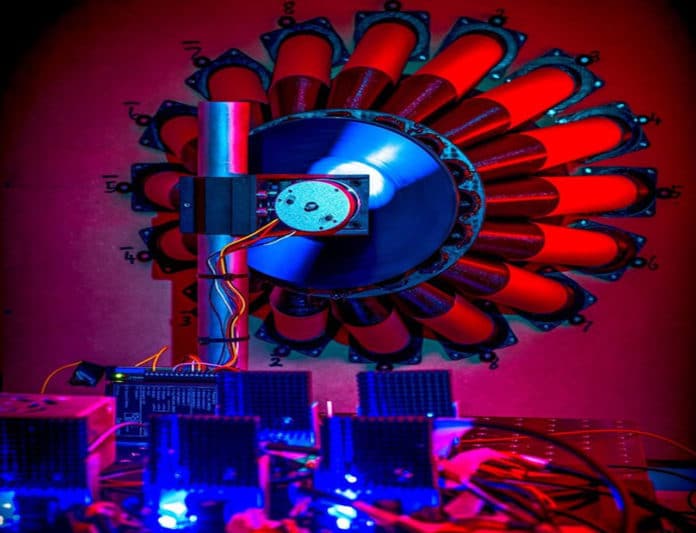In 1969, British physicist Roger Penrose put an idea on the table that energy could be generated by lowering an object into the black hole’s ergosphere. In this area, Penrose suggested that the object would achieve negative energy.
After two years, in 1971, another physicist named Yakov Zel’ dovich suggested the theory could be tested with a more practical, earthbound experiment. He proposed that’ twisted’ light waves, hitting the surface of a rotating metal cylinder turning at just the right speed, would end up being reflected with additional energy extracted from the cylinder’s rotation thanks to a quirk of the rotational Doppler effect.
This concept, which is a crucial step towards the understanding that black holes may amplify quantum fluctuations, has not been verified experimentally owing to the challenging experimental requirement that the cylinder rotation rate must be larger than the incoming wave frequency.
Now this 50-year-old theory that began as speculation about how an alien civilization could use a black hole to generate energy has been experimentally verified for the first time in a Glasgow research lab.
A new study by the University of Glasgow’s School of Physics and Astronomy has finally demonstrated a way to experimentally demonstrate the effect that Penrose and Zel’ dovich proposed by twisting sound instead of light – a much lower frequency source, and thus much more practical to demonstrate in the lab.
For the study, scientists developed a system using a small ring of speakers to create a twist in the sound waves analogous to the twist in the light waves proposed by Zel’ dovich. The twisted sound waves were directed towards a rotating sound absorber made from a foam disc.
There is a set of microphones behind the disc that pick the sound from the speakers as it passed through the disc, which steadily increased the speed of its spin.
Scientists were looking to hear to know that Penrose and Zel’ dovich’s theories were correct. There was a notable change in the frequency and amplitude of the sound waves as they traveled through the disc, caused by that quirk of the doppler effect.
Marion Cromb, a Ph.D. student in the University’s School of Physics and Astronomy, is the paper’s lead author. Marion said: “The extended version of the doppler effect is familiar to most people as the phenomenon that occurs as the pitch of an ambulance siren appears to rise as it approaches the listener but drops as it heads away. It seems to increase because the sound waves are reaching the listener more frequently as the ambulance nears, then less often as it passes.”
“The rotational Doppler effect is similar, but the effect is confined to a circular space. The twisted sound waves change their pitch when measured from the rotating surface. If the surface rotates fast enough, then the sound frequency can do something extraordinary – it can go from a positive frequency to a negative one, and in doing so, steal some energy from the rotation of the surface.”
With the increasing speed of spinning discs, the pitch of the sound from the speakers drops until it becomes too low to hear. Then, the pitch rises back up again until it reaches its previous pitch – but louder, with an amplitude of up to 30% greater than the original sound coming from the speakers.
Marion added: “What we heard during our experiment was extraordinary. What’s happening is that the frequency of the sound waves is Doppler-shifted to zero as the spin speed increases. When the sound starts back up again, it’s because the waves have been shifted from a positive frequency to a negative frequency. Those negative-frequency waves are capable of taking some of the energy from the spinning foam disc, becoming louder in the process – just as Zel’ dovich proposed in 1971.”
Professor Daniele Faccio, also of the University of Glasgow’s School of Physics and Astronomy, is a co-author of the paper. Prof Faccio added: “We’re thrilled to have been able to experimentally verify some extremely odd physics a half-century after the theory was first proposed. It’s strange to think that we’ve been able to confirm a half-century-old theory with cosmic origins here in our lab in the west of Scotland, but we think it will open up a lot of new avenues of scientific exploration. We’re keen to see how we can investigate the effect on different sources such as electromagnetic waves shortly.”
Journal Reference:
- Cromb, M., Gibson, G.M., Toninelli, E. et al. Amplification of waves from a rotating body. Nat. Phys. (2020). DOI: 10.1038/s41567-020-0944-3
